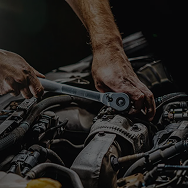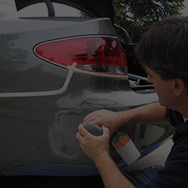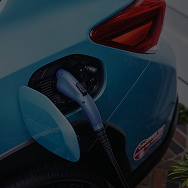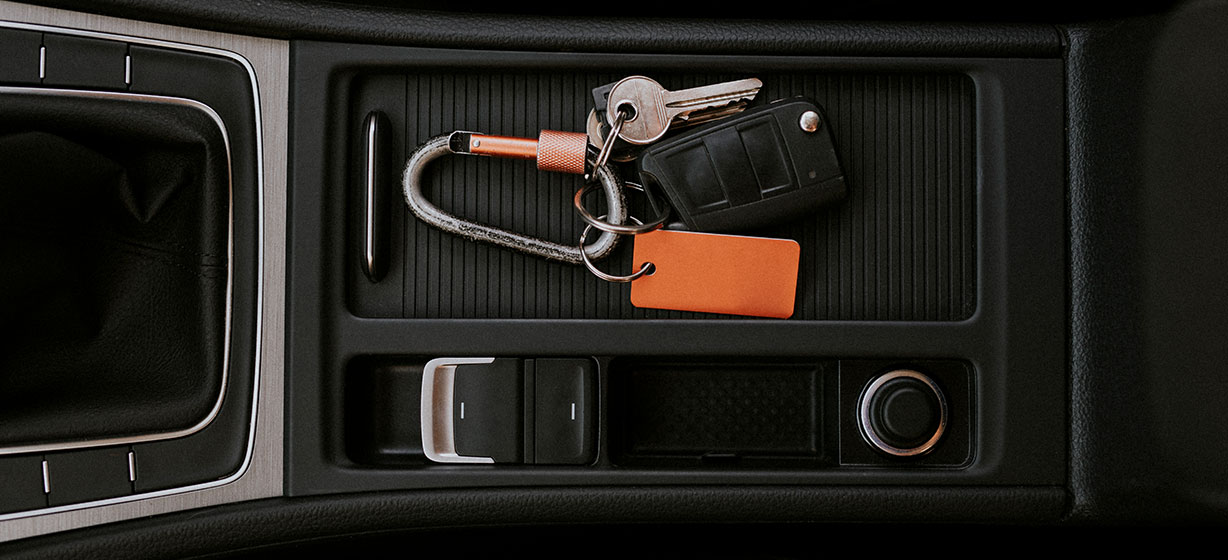What are the Steps That Must Be Followed in Inspecting the Car You Want to Buy?
<p style="text-align: justify;">Buying a car is an exciting experience, but it also requires careful consideration to ensure you're making a smart purchase. Whether you're buying a new or used car, it's essential to thoroughly inspect the vehicle to check for potential issues and confirm that you're getting good value for your money. A proper inspection can help you avoid unpleasant surprises and expensive repairs in the future. We’ll guide you through the steps that must be followed when inspecting the car you want to buy, with detailed explanations for each.</p>
<p style="text-align: justify;"> </p>
<p style="text-align: justify;"><strong>Step 1: Research the Car’s History (For Used Cars)</strong></p>
<p style="text-align: justify;"><strong>Why it’s important:</strong><br />
If you’re purchasing a used car, understanding its history is crucial to ensure it hasn’t been in any serious accidents, suffered extensive damage, or has any outstanding recalls. A car history report can also help you confirm the car’s mileage and ownership history.</p>
<p style="text-align: justify;"><strong>What to do:</strong></p>
<ol>
<li style="text-align: justify;"><strong>Obtain the VIN (Vehicle Identification Number):</strong> The VIN is a unique 17-character code that identifies the car. Ask the seller for the VIN, which is usually located on the dashboard or inside the driver’s side door frame.</li>
<li style="text-align: justify;"><strong>Use an online service:</strong> Enter the VIN into a service like Carfax or AutoCheck to get a report on the car’s history. This report will provide details about accidents, service records, previous owners, and odometer readings.</li>
<li style="text-align: justify;"><strong>Check for recalls:</strong> Make sure that there are no unresolved safety recalls on the car. You can check this on the NHTSA (National Highway Traffic Safety Administration) website.</li>
</ol>
<p style="text-align: justify;"> </p>
<p style="text-align: justify;"><strong>Step 2: Inspect the Exterior Condition</strong></p>
<p style="text-align: justify;"><strong>Why it’s important:</strong><br />
The exterior of the car not only affects its appearance but can also reveal hidden damage or issues that could affect its performance and safety.</p>
<p style="text-align: justify;"><strong>What to do:</strong></p>
<ol>
<li style="text-align: justify;"><strong>Check for dents, scratches, and rust:</strong> Walk around the car and look for any visible signs of damage. Small dings or scratches might not be a dealbreaker, but significant dents or rust can be a sign of poor maintenance or an accident.</li>
<li style="text-align: justify;"><strong>Look for paint inconsistencies:</strong> Inconsistencies in the paint color could indicate that the car has been repainted due to an accident. Check for color mismatches, overspray, or peeling paint.</li>
<li style="text-align: justify;"><strong>Examine the tires:</strong> Look at the tread depth and condition of all four tires. Uneven tire wear could indicate alignment issues or suspension problems. If the tires are worn down, this could be an additional cost you’ll need to factor in.</li>
<li style="text-align: justify;"><strong>Inspect the lights and windows:</strong> Ensure all headlights, taillights, and turn signals work correctly. Check the windshield and windows for cracks, chips, or other damages.</li>
</ol>
<p style="text-align: justify;"> </p>
<p style="text-align: justify;"><strong>Step 3: Check the Car’s Underbody</strong></p>
<p style="text-align: justify;"><strong>Why it’s important:</strong><br />
The underbody of a car is often overlooked, but it’s crucial to check for signs of corrosion or damage, which can be costly to repair.</p>
<p style="text-align: justify;"><strong>What to do:</strong></p>
<ol>
<li style="text-align: justify;"><strong>Look for rust or damage:</strong> Use a flashlight to inspect the undercarriage for any rust or damage. Rust can weaken the car’s frame, affecting its structural integrity.</li>
<li style="text-align: justify;"><strong>Check the exhaust system:</strong> Look for any visible leaks or damage to the exhaust pipes, muffler, and catalytic converter. Any issues here could lead to costly repairs or affect the car’s emissions performance.</li>
<li style="text-align: justify;"><strong>Inspect suspension components:</strong> While under the car, check for signs of damage to the suspension system, such as worn shocks, struts, or bushings.</li>
</ol>
<p style="text-align: justify;"> </p>
<p style="text-align: justify;"><strong>Step 4: Open the Hood and Inspect the Engine Bay</strong></p>
<p style="text-align: justify;"><strong>Why it’s important:</strong><br />
The engine is the heart of the vehicle, and an inspection here can give you a good idea of how well the car has been maintained.</p>
<p style="text-align: justify;"><strong>What to do:</strong></p>
<ol>
<li style="text-align: justify;"><strong>Check the oil level and condition:</strong> Use the dipstick to check the oil level. The oil should be between the minimum and maximum marks, and it should be a clear, amber color. If it’s black or gritty, this could indicate poor maintenance.</li>
<li style="text-align: justify;"><strong>Look for leaks:</strong> Inspect the engine for any signs of oil or coolant leaks, which may be leaking from hoses, seals, or gaskets. These leaks can lead to major engine problems if not addressed.</li>
<li style="text-align: justify;"><strong>Check the belts and hoses:</strong> Ensure the belts (timing belt, serpentine belt) are in good condition—no cracks, frays, or signs of wear. Check the hoses for cracks, leaks, or bulges, which could indicate potential problems with the cooling or air-conditioning systems.</li>
<li style="text-align: justify;"><strong>Inspect the battery:</strong> Check the battery terminals for corrosion. Make sure the battery is securely mounted and that there are no visible cracks or leaks.</li>
</ol>
<p style="text-align: justify;"> </p>
<p style="text-align: justify;"><strong>Step 5: Examine the Interior</strong></p>
<p style="text-align: justify;"><strong>Why it’s important:</strong><br />
The interior of the car should be comfortable and free from unpleasant odors, excessive wear, or signs of neglect. This is also an indication of how well the car was maintained.</p>
<p style="text-align: justify;"><strong>What to do:</strong></p>
<ol>
<li style="text-align: justify;"><strong>Check the seats and upholstery:</strong> Inspect the seats for tears, stains, or excessive wear. Leather upholstery may crack over time if not properly maintained.</li>
<li style="text-align: justify;"><strong>Test the functionality of controls and electronics:</strong> Turn on the car and check if all interior electronics, such as the radio, air conditioning, windows, and dashboard lights, are working. Ensure that the air conditioning and heating systems blow air at the correct temperature.</li>
<li style="text-align: justify;"><strong>Smell the interior:</strong> A musty or moldy smell could indicate water damage, which could lead to issues like rust and electrical problems. Cigarette smoke or pet odors might also indicate a poor previous owner.</li>
<li style="text-align: justify;"><strong>Check the odometer reading:</strong> Ensure the mileage on the odometer matches the car’s history report. Be cautious of a car with unusually low mileage for its age, as this could indicate tampering.</li>
</ol>
<p style="text-align: justify;"> </p>
<p style="text-align: justify;"><strong>Step 6: Take the Car for a Test Drive</strong></p>
<p style="text-align: justify;"><strong>Why it’s important:</strong><br />
A test drive is essential to assess how the car performs on the road. This is when you’ll notice any issues with handling, noise, or comfort.</p>
<p style="text-align: justify;"><strong>What to do:</strong></p>
<ol>
<li style="text-align: justify;"><strong>Start the engine:</strong> Listen for any unusual sounds when starting the engine. It should start smoothly without hesitation or rough idling.</li>
<li style="text-align: justify;"><strong>Check the acceleration and braking:</strong> Drive at a variety of speeds and test the car’s acceleration, braking, and cornering. Pay attention to any vibrations, pulling to one side, or strange noises. These could be signs of suspension, brake, or alignment issues.</li>
<li style="text-align: justify;"><strong>Listen for any strange noises:</strong> Pay close attention to any unusual noises, such as clunks, squeaks, or rattles. These could indicate problems with the transmission, suspension, or exhaust.</li>
<li style="text-align: justify;"><strong>Assess the comfort and handling:</strong> Evaluate how comfortable the seats are, how easy it is to adjust the mirrors and steering wheel, and how responsive the steering feels. Make sure the car is easy to drive and handle in different conditions.</li>
</ol>
<p style="text-align: justify;"> </p>
<p style="text-align: justify;"><strong>Step 7: Review the Car’s Documents</strong></p>
<p style="text-align: justify;"><strong>Why it’s important:</strong><br />
Reviewing the vehicle’s documents is a key part of the inspection process to ensure the car is legally sound and that you’re getting a fair deal.</p>
<p style="text-align: justify;"><strong>What to do:</strong></p>
<ol>
<li style="text-align: justify;"><strong>Check the title:</strong> Ensure the car has a clean title, meaning it hasn't been branded as salvaged or rebuilt after an accident. Verify the title matches the VIN and the car history report.</li>
<li style="text-align: justify;"><strong>Review maintenance records:</strong> Ask the seller for any available maintenance or repair records. These documents can help confirm whether the car has been well-maintained and if any major repairs or parts replacements have been done.</li>
<li style="text-align: justify;"><strong>Confirm the warranty status:</strong> If the car is still under warranty, review the terms and conditions. This could provide valuable protection for future repairs.</li>
</ol>
<p style="text-align: justify;"> </p>
<p style="text-align: justify;"><strong>Step 8: Get a Professional Inspection (Optional but Recommended)</strong></p>
<p style="text-align: justify;"><strong>Why it’s important:</strong><br />
Even if you feel confident about your inspection, it’s often wise to have a professional mechanic inspect the car before finalizing the purchase. They can detect issues that may not be immediately obvious to an untrained eye.</p>
<p style="text-align: justify;"> </p>
<p style="text-align: justify;"><strong>What to do:</strong></p>
<ol>
<li style="text-align: justify;"><strong>Hire a mechanic:</strong> Schedule a pre-purchase inspection with a trusted mechanic. They will conduct a thorough inspection of the car, including checking the engine, transmission, suspension, and other vital components.</li>
<li style="text-align: justify;"><strong>Get an expert opinion:</strong> If the mechanic identifies any issues, ask for an estimate of the repair costs to help you decide whether the car is worth the price.</li>
</ol>
<p style="text-align: justify;"> </p>
<p style="text-align: justify;">Following these steps ensures that you perform a thorough inspection of the car you want to buy, helping you make an informed decision. Whether you’re purchasing a new or used car, attention to detail during the inspection can save you from costly repairs and give you peace of mind knowing that you’re making a smart investment. If you're unsure about any part of the process, don’t hesitate to consult a professional mechanic who can offer their expertise and help you avoid potential pitfalls.</p>
Buying a car is an exciting experience, but it also requires careful...



 Car Maintenance
Car Maintenance
 DIY Repairs
DIY Repairs
 Seasonal Car Care
Seasonal Car Care
 Hybrid & Electric Vehicles
Hybrid & Electric Vehicles
 Safety Tips
Safety Tips
 Cost-Saving Strategies
Cost-Saving Strategies
 Login
Login  Signup
Signup



